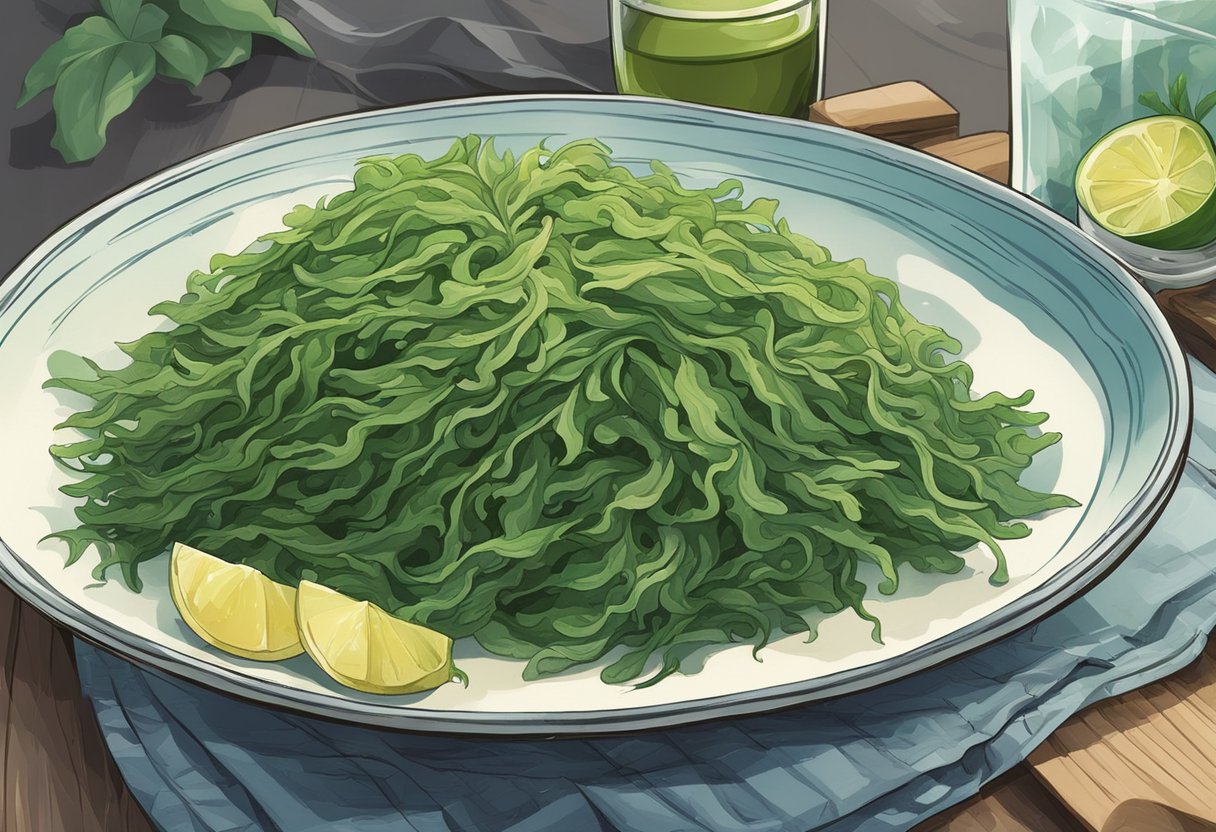Seaweed, a marine algae found abundantly in our oceans, has long been a staple in various cuisines, notably in East Asia. It's often noted for its fish-like taste, which prompts curiosity about its flavor origins. The connection between the taste of seaweed and fish primarily stems from their shared habitat—the ocean. Seaweeds absorb a mix of organic compounds, including salts, amino acids, and minerals from seawater, which contribute to their distinctive taste.
These compounds that seaweed absorbs are also present in fish, as they too live in and consume organisms from the same environment. The flavor profile of seaweed is further influenced by its own unique compounds, such as certain amino acids that are known to impart umami—a savory taste also characteristic of many seafoods. Moreover, the processing and preparation of seaweed can affect its taste. Drying, seasoning, and adding it to dishes can either heighten or mellow its 'fishy' flavor.

Key Takeaways
- Seaweed's taste is influenced by its absorption of compounds from the ocean, similar to fish.
- Unique amino acids in seaweed contribute to its 'umami' flavor, reminiscent of seafood.
- The processing and preparation of seaweed can modify its fish-like taste.
Seaweed and Its Ocean Habitat

Seaweed thrives in marine environments where its flavor profile, characteristically similar to fish, is cultivated through various factors inherent to its habitat.
Nutritional Content and Mineral Presence
Seaweeds are rich in iodine, a mineral prevalent in the ocean that greatly contributes to the umami flavor often associated with seafood. They also absorb a wide array of other minerals from their surroundings, such as calcium, magnesium, and potassium, which are critical for their growth and play a part in the savory taste that seaweed imparts.
- Iodine: Essential for thyroid function; imparts a sea-like flavor.
- Calcium: Vital for structural stability of the algae.
- Magnesium: Supports chlorophyll production.
- Potassium: Important for osmoregulation.
The presence of amino acids such as glutamate and certain fatty acids also bequeaths seaweed with its distinctive marine taste. These compounds are similar to those found in many species of fish, hence the taste overlaps.
Photosynthesis and Algae
Seaweed, through the process of photosynthesis, produces organic substances using sunlight, carbon dioxide, and water. This process is crucial for the survival of not just the seaweed but also the marine life that feeds on it.
- Sunlight: Penetrates the water and is absorbed by the chlorophyll within the algae.
- Carbon Dioxide: Dissolved in water and taken up by seaweed.
- Water: Utilized in the photosynthetic reaction to produce oxygen and glucose.
The function of photosynthesis in seaweed is not only essential for its survival but also contributes to its fish-like taste. Photosynthetic activity leads to the formation of certain organic compounds that are shared with marine fauna, reinforcing the flavor association with the fish.
Flavor Profile of Seaweed

Seaweed's distinctive taste is primarily due to certain flavor compounds and environmental influences that give it a profile commonly associated with the ocean.
Umami Flavor Compounds
Seaweeds are rich in natural glutamates, which are responsible for the umami flavor, a savory taste recognized as one of the five basic tastes. The presence of amino acids such as glutamic acid in seaweeds like nori, kombu, and wakame is particularly high. These compounds activate umami receptors on the human tongue, creating a depth of flavor that is often likened to fish, which also contains similar glutamates.
Impact of Environment on Flavor
The taste of seaweed is also influenced by its growing environment. Elements like salinity, mineral content of the water, and sunlight exposure can affect the production of flavor compounds in seaweed. Additionally, the presence of certain iodine compounds contributes to a taste that is reminiscent of seafood. Seaweeds harvested from cleaner waters tend to have a milder flavor, while those from waters with higher mineral content can have a more intense, ocean-like taste.
Processing and Preparation of Seaweed

The taste of seaweed is greatly influenced by how it is processed and prepared. These procedures often intensify its natural flavor, reminiscent of the sea.
Drying Techniques
Seaweed is commonly dried to preserve its flavor and extend its shelf life. The method used for drying often influences the intensity of the fish-like taste. There are two primary methods:
- Air drying: Seaweed is spread out and left to dry naturally under the sun. This slow process allows it to retain a mild, oceanic flavor.
- Oven drying: For a quicker result, seaweed can be dried in an oven. This method can sometimes concentrate the marine flavors more intensely, due to the rapid moisture removal.
Seasoning and Culinary Uses
When preparing seaweed for culinary purposes, seasoning plays a crucial role in its final taste profile. Seaweed can be seasoned with:
- Salt: Enhances its natural briny notes.
- Soy sauce or tamari: Adds umami and depth, complementing the oceanic taste.
In the kitchen, seaweed is utilized in various dishes:
- As a crispy snack: Often enjoyed on its own, where its salty, fish-like essence is a key feature.
- In soups and salads: Where it imparts a seafood characteristic without the addition of fish.
Frequently Asked Questions
The taste of seaweed is akin to the ocean's essence due to shared compounds with marine life. Understanding these elements answers common queries about its flavor profile.
How can the fishy taste in seaweed be reduced?
One can mitigate the oceanic taste in seaweed by soaking it in water with a dash of vinegar or lemon juice before cooking, which helps to neutralize its potent aroma and flavor.
What are the main taste differences between dried and fresh seaweed?
Dried seaweed typically exhibits a more concentrated savory flavor, known as umami, along with a heightened brininess compared to its fresh counterpart, which often has a milder taste and chewier texture.
Are there specific types of seaweed that are known for having a less fishy taste?
Dulse and nori are often cited for their less intense fishy flavor, making them a preferred choice for those sensitive to the stronger oceanic taste found in varieties like kombu or wakame.
Why does dried seaweed taste like fish?
Dried seaweed retains and intensifies the natural compounds called dimethyl sulfides, which are also present in fish, giving it its characteristic sea-related flavor.
What culinary techniques can minimize the oceanic flavor in seaweed?
Rinsing seaweed thoroughly and incorporating it into dishes with robust flavors like soy sauce or sesame oil can help counterbalance its fishy taste. Cooking methods such as grilling or frying can also diminish the oceanic flavor.




